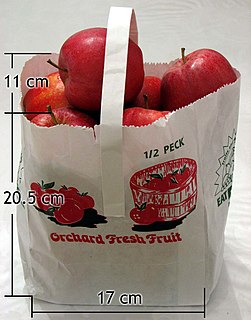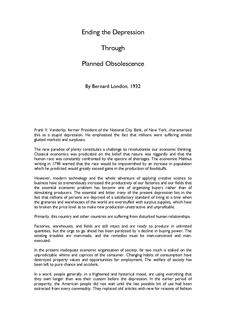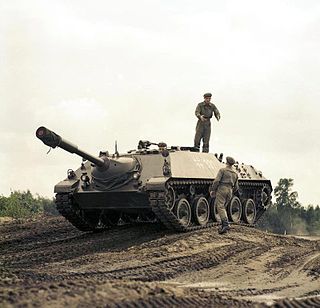
A nautical mile is a unit of measurement used in both air and marine navigation, and for the definition of territorial waters. Historically, it was defined as one minute of a degree of latitude. Today it is defined as exactly 1852 metres. The derived unit of speed is the knot, one nautical mile per hour.

The tonne, commonly referred to as the metric ton in the United States and Canada, is a non-SI metric unit of mass equal to 1,000 kilograms or one megagram. It is equivalent to approximately 2,204.6 pounds, 1.102 short tons (US) or 0.984 long tons (UK). Although not part of the SI, the tonne is accepted for use with SI units and prefixes by the International Committee for Weights and Measures.

A peck is an imperial and United States customary unit of dry volume, equivalent to 2 dry gallons or 8 dry quarts or 16 dry pints. Two pecks make a kenning (obsolete), and four pecks make a bushel. Although the peck is no longer widely used, some produce, such as apples, is still often sold by the peck. Despite being referenced in the well-known Peter Piper tongue twister, pickled peppers are so rarely sold by the peck that any association between pickled peppers and the peck unit of measurement is considered humorous in nature.
In the metric system, a microgram or microgramme is a unit of mass equal to one millionth of a gram. The unit symbol is μg according to the International System of Units. In μg the prefix symbol for micro- is the Greek letter μ (Mu).

Obsolescence is the state of being which occurs when an object, service, or practice is no longer wanted even though it may still be in good working order; however, the international standard EN62402 Obsolescence Management - Application Guide defines Obsolescence as being the "transition from availability of products by the original manufacturer or supplier to unavailability". Obsolescence frequently occurs because a replacement has become available that has, in sum, more advantages compared to the disadvantages incurred by maintaining or repairing the original. Obsolete also refers to something that is already disused or discarded, or antiquated. Typically, obsolescence is preceded by a gradual decline in popularity.
A Presidential Unit Citation is a unit citation awarded by the president of a state.
A quarter is one-fourth, ¼, 25% or 0.25 and may refer to:
The design life of a component or product is the period of time during which the item is expected by its designers to work within its specified parameters; in other words, the life expectancy of the item. It is the length of time between placement into service of a single item and that item's onset of wearout.

The United States Armed Forces awards and decorations are primarily the medals, service ribbons, and specific badges which recognize military service and personal accomplishments while a member of the U.S. Armed Forces. Such awards are a means to outwardly display the highlights of a service member's career.

Candlepower is an obsolete unit of measurement for luminous intensity, equal to 0.981 candelas. It expresses levels of light intensity relative to the light emitted by a candle of specific size and constituents. In modern usage, candlepower equates directly to the unit of luminous intensity, candela.
Awards and decorations of the United States Coast Guard are military medals and ribbons of the United States Coast Guard which are currently issued under the authority of the Department of Homeland Security.
The obsolete Finnish units of measurement consist mostly of a variety of units traditionally used in Finland that are similar to those that were traditionally used in other countries and are still used in the United Kingdom and the United States.

The Kanonenjagdpanzer was a German Cold War tank destroyer equipped with a 90mm anti-tank gun from obsolete M47 Patton tanks. Its design was very similar to that of the World War II Jagdpanzer IV.
In Pegu, Burma, the abucco was a unit of mass used for gold and silver. It was approximately 196.44 grams or 6.316 troy ounces.

The Gotha Go 145 was a German World War II-era biplane of wood and fabric construction used by Luftwaffe training units. Although obsolete by the start of World War II, the Go 145 remained in operational service until the end of the War in Europe as a night harassment bomber.








